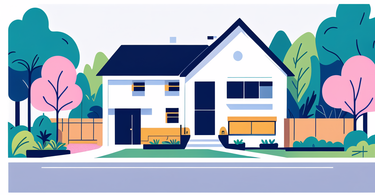The Importance of Pool Privacy Fencing in Home Value
Understanding the ROI of Aesthetic Fencing
Investing in a stylish pool privacy fence can significantly boost your home's value. A well-designed fence enhances curb appeal and attracts potential buyers. It creates a sense of luxury and exclusivity around your pool area. This added feature can increase your property's market value by up to 5-10%. Real estate experts agree that a beautiful fence is a selling point. It shows that the home is well-maintained and thoughtfully designed. Buyers often see it as a ready-made outdoor entertaining space. This perception can lead to faster sales and higher offers.

Ensuring Your Pool's Safety and Maintenance
A good privacy fence does more than just look nice. It's crucial for pool safety and upkeep. A sturdy fence keeps children and pets safe from accidental falls. It also prevents unauthorized access, reducing liability risks. Fences act as windbreaks, keeping debris out of your pool. This means less time cleaning and lower maintenance costs. Some fences can even help regulate water temperature. They block cool breezes, keeping your pool warmer for longer. This can extend your swimming season and save on heating costs.
Legal Considerations for Pool Fencing in the United States
Pool fencing isn't just a good idea – it's often the law. Many states have strict rules about pool enclosures. These laws aim to prevent drownings and accidents. Typically, fences must be at least 4 feet tall. They should have self-closing, self-latching gates. Some areas require specific materials or designs. It's crucial to check local codes before installing a fence. Non-compliance can lead to fines or legal issues. It may also affect your home insurance rates. Always consult with a local expert to ensure your fence meets all requirements.
Innovative Materials and Design for Veg Garden Fences
Choosing the Right Materials for Longevity and Maintenance
When it comes to veg garden fences, material choice is key. You want something that lasts and looks good. Wood is classic but needs regular upkeep. Vinyl is low-maintenance but can look artificial. Aluminum offers a great balance of durability and style. It resists rust and doesn't need painting. Composite materials are gaining popularity. They mimic wood but require less care. For a natural look, consider bamboo or reed fencing. These eco-friendly options blend well with garden settings. Whatever you choose, ensure it can withstand your local climate.

Incorporating Natural Elements into Your Design
Blending your fence with nature creates a seamless, elegant look. Use climbing plants to soften hard fence lines. Jasmine or clematis can turn a plain fence into a living wall. Integrate planter boxes into your fence design. This adds greenery at different heights. Consider using natural stone or wood accents. These materials tie your fence to the landscape. Living fences, made of densely planted shrubs, offer privacy and beauty. They attract wildlife and improve air quality. Mixing materials, like stone pillars with wooden panels, adds visual interest.
Customizable Options for a Personal Touch
Personalization makes your fence unique to your style. Consider adding decorative post caps or finials. These small details can transform a simple fence. Custom-cut panels or lattice work add character. You can create patterns or even spell out words. Lighting fixtures can be built into the fence for ambiance. Think about incorporating functional elements like built-in benches or shelves. Color is another way to customize. Choose a hue that complements your home and garden. Some fences allow for changeable panels, giving you seasonal flexibility.
Smart Fencing Solutions for Modern Homeowners
Integrating Technology with Your Pool Fence
Smart technology is revolutionizing pool fencing. Automated gates with fingerprint or code access enhance security. Motion sensors can alert you when someone enters the pool area. Some systems link to your smartphone for remote monitoring. LED lighting integrated into the fence can change colors to set the mood. Solar-powered options are eco-friendly and can reduce energy costs. Wi-Fi extenders built into fence posts improve connectivity in your outdoor space. Consider fences with built-in speakers for a complete outdoor entertainment system.

Space-Saving and Multi-Functional Fencing Features
Modern fences do more than just provide privacy. Retractable fences save space when not in use. They're perfect for smaller yards or occasional entertaining. Fences with built-in storage solve outdoor clutter issues. You can hide pool equipment or garden tools. Some designs include fold-down tables or drink holders. These are great for poolside snacks or as temporary workspaces. Modular fence systems allow for easy reconfiguration. You can adjust your layout as your needs change. Look for fences with integrated seating to maximize your outdoor living area.
Professional Installation and Maintenance Tips
While DIY is tempting, professional installation ensures longevity and safety. Experts can navigate tricky terrain and local building codes. They have the tools to ensure your fence is level and secure. For maintenance, regular inspections are key. Check for loose boards, rust, or weather damage. Clean your fence annually with appropriate products. Wood fences may need resealing or repainting every few years. For metal fences, touch up any scratches to prevent rust. Trim nearby plants to prevent moisture damage. Consider applying a protective coating for extra durability. With proper care, your fence can last for decades.
